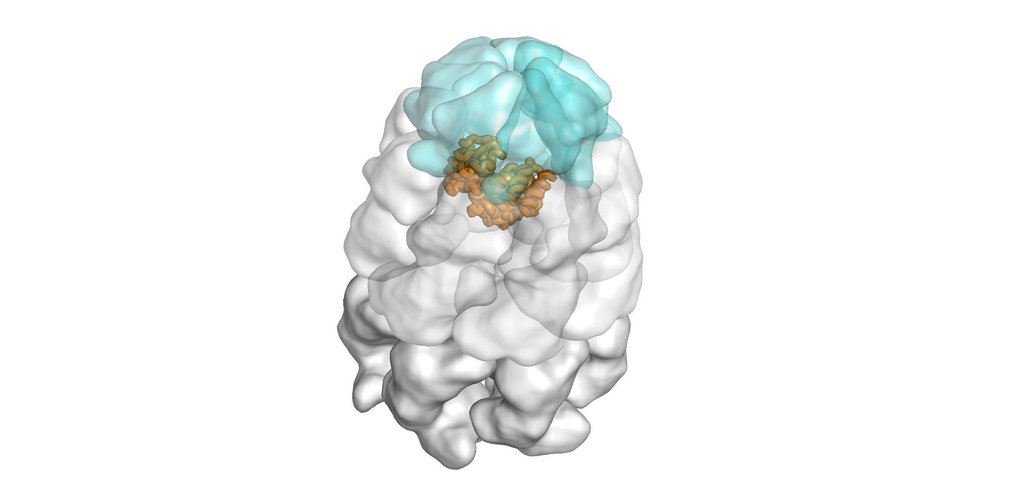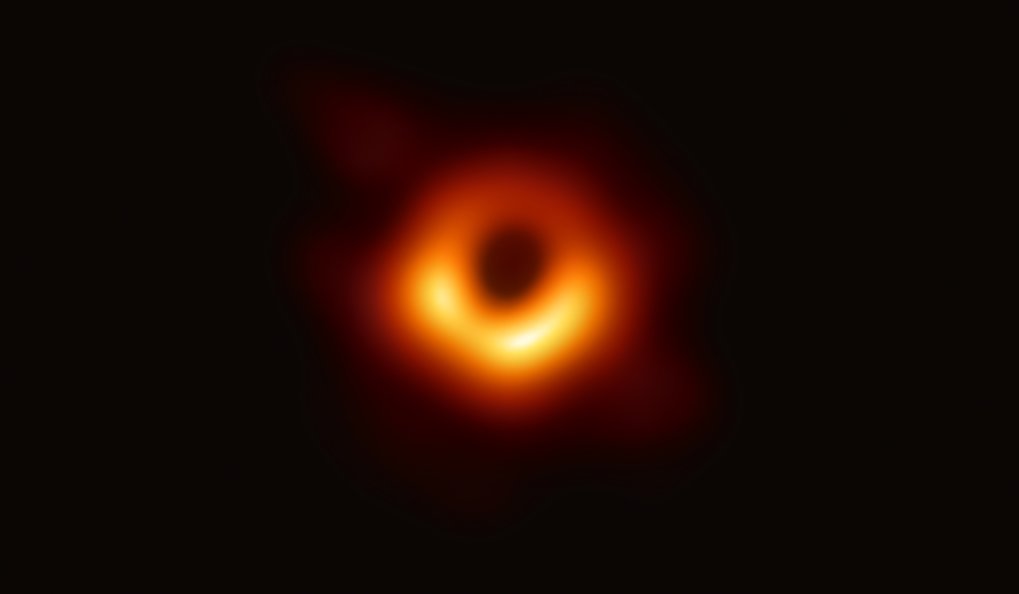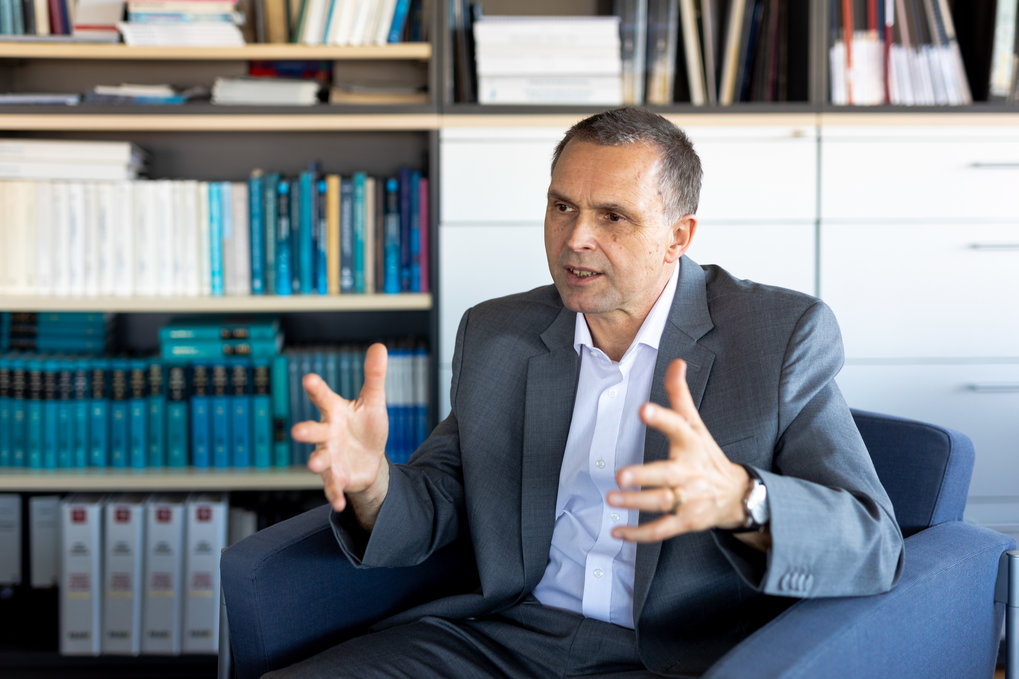Franz-Ulrich Hartl and the Event Horizon Telescope Collaboration are honored with the world's richest science prize
Franz-Ulrich Hartl, Director at the Max Planck Institute of Biochemistry in Martinsried, is awarded the Breakthrough Prize in Life Sciences 2020 together with a colleague from the US. They are honored for discovering functions of molecular chaperones in mediating protein folding and preventing protein aggregation. Furthermore, the Event Horizon Telescope Collaboration will receive the 2020 Breakthrough Prize in Fundamental Physics, in recognition of the first image of a black hole in the galaxy Messier 87. The Max Planck Institute for Radio Astronomy in Bonn has played a major role in this achievement. The prize will be awarded on November 3 in Silicon Valley, USA. It is the highest endowed science prize in the world with three million US dollars.

Proteins are small molecular machines within each cell and take over a variety of tasks. In order to perform these tasks, newly produced immature chain-like proteins have to fold into a specific, three-dimensional structure. In the 1980s, Hartl and colleagues, in collaboration with Arthur L. Horwich, who is now at Yale School of Medicine/HHMI, demonstrated that most of the proteins do not fold spontaneously. Rather, they need assistance in their folding process by so-called molecular chaperones. At the time, this finding contradicted the general dogma. The scientists discovered that certain chaperones are cage-like 'folding machines'. They offer a protected environment to newly produced proteins, allowing them to fold into their correct functional structure.
Misfolded proteins clump together to form toxic aggregates and are one of the main causes of severe neurodegenerative disorders such as Alzheimer's disease or Parkinson's disease. Furthermore, protein misfolding plays an essential role in aging. The findings on chaperone functions make a significant contribution to the development of new therapeutic strategies.
The first picture of a black hole

Using eight sensitive radio telescopes strategically positioned around the world in Antarctica, Chile, Mexico, Hawaii, Arizona and Spain, a global collaboration of scientists at 60 institutions operating in 20 countries and regions captured an image of a black hole for the first time. By synchronizing each telescope using a network of atomic clocks, the team created a virtual telescope as large as the Earth, with a resolving power never before achieved from the surface of our planet. Fundamental for the calibration of the data, which yielded the first image of a Black Hole, was APEX in Chile, one of the telescopes of the Max Planck Institute for Radio Astronomy. "The effort of over twenty years of preparation has born fruit in the first image of a black hole, a result of a large collaboration with many astronomers giving their best. We are delighted that our collective effort will be awarded the prestigious Breakthrough Prize. It is a wonderful recognition of patient and thorough work of a great team", says Anton Zensus, Chair of the EHT Collaboration Board and Director at the Max Planck Institute for Radio Astronomy.
One of their first targets was the supermassive black hole at the center of the Messier 87 galaxy - its mass equivalent to 6.5 billion suns. After painstakingly analyzing the data with novel algorithms and techniques, the team produced an image of this galactic monster, silhouetted against hot gas swirling around the black hole, that matched expectations from Einstein's theory of gravity: a bright ring marking the point where light orbits the black hole, surrounding a dark region where light cannot escape the black hole's gravitational pull.
A total of 35 scientists working at the MPIfR including its three directors will be awarded the Breakthrough Prize, along with 313 colleagues from around the world. All three directors of the Max Planck Institute for Radio Astronomy were involved in this breakthrough: J. Anton Zensus, Karl M. Menten as chief scientist of the APEX telescope participating in the measurements, and Michael Kramer (Co-PI of the "Black Hole Cam" project funded by the European Research Council as part of the EHT).
About F.-Ulrich Hartl

F.-Ulrich Hartl was born in 1957. He studied Medicine at the University of Heidelberg, where he also obtained his doctoral degree. A fellowship from the German Research Foundation (DFG) enabled him to undertake research at the University of California, Los Angeles. In 1997, the Max Planck Society succeeded in enticing the renowned scientist back to Germany. Since then, he has been Director and head of the Department of Cellular Biochemistry at the Max Planck Institute of Biochemistry. Within the last years he was honored with multiple scientific prizes.
About J. Anton Zensus

J. Anton Zensus was born in 1958 and received his doctorate at the MPI for Radio Astronomy in 1984. In 1985 he went to the US as a postdoctoral fellow to the California Institute of Technology in Pasadena, California, and in 1988 to the National Radio Astronomy Observatory in Socorro, New Mexico and Charlottesville, Virginia. In 1994, he was appointed Tenured Scientist by Associated Universities. In 1996 he was appointed Director of the Max Planck Institute for Radio Astronomy in Bonn. There he heads the research department for Very Long Baseline Interferometry (VLBI). His main research interests are extragalactic radio sources and active galaxies in the universe, which he investigates with the VLBI method using radio telescopes on all continents and in space. He has been Chairman of the Board of Event Horizon Collaboration since 2017.
About the Event Horizon Telescope Collaboration
The EHT collaboration involves more than 200 researchers from Europe, Asia, Africa, North and South America. The international collaboration is working to capture the first-ever image of a black hole by creating a virtual Earth-sized telescope. Supported by considerable international investment, the EHT links existing telescopes using novel systems - creating a fundamentally new instrument with the highest angular resolving power that has yet been achieved.






